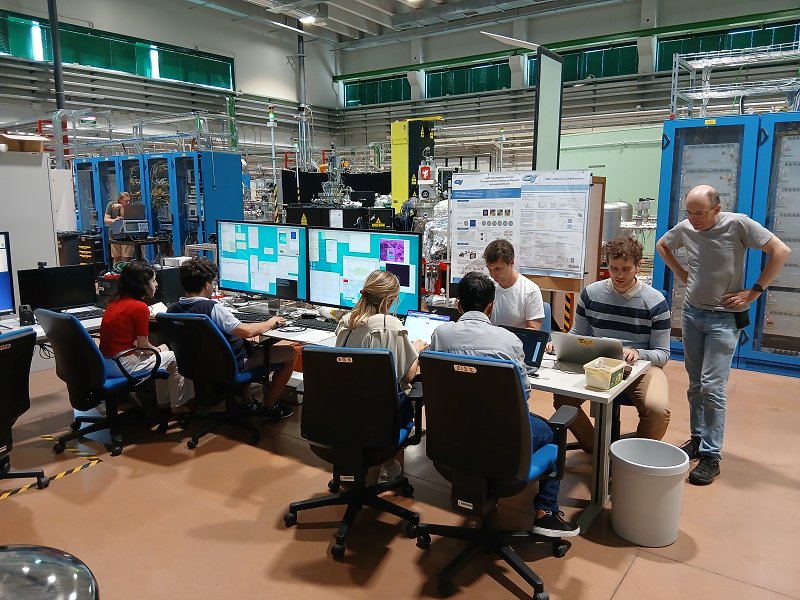Highly Successful Experiment at the FERMI Free-Electron Laser in Bazovica

A team of colleagues from our department (Janez Turnšek, Andrej Mihelič, Klemen Bučar, and Matjaž Žitnik) is once again pushing the boundaries of what is known. They are studying the phenomenon of self-amplification of XUV light during the spontaneous emission process following the decay of excited states in helium, under conditions of elevated gas pressure and light intensity in a resonantly tuned excitation pulse.
The experiment took place last week in collaboration with researchers from the Politecnico and the IFN CNR Institute in Milan, with the support of the staff at the EIS-TIMEX beamline of the FERMI free-electron laser. This is the second experiment on the topic of XUV light self-amplification. In autumn 2023, they demonstrated that self-amplified spontaneous emission occurs during the decay of a doubly excited state in helium if the gas pressure and light intensity in the resonantly tuned excitation pulse are sufficiently high.
In this latest experiment, they observed self-amplification also at other helium resonances. They recorded intensity images of the amplified light in the transverse plane and investigated the influence of simultaneous IR laser light, which transfers population from one resonance to another, on the amplification. One of the surprising findings of the experiment is that self-amplification in the presence of the laser can be significantly greater than without it. They also observed a dependence of the emitted light's wavelength on the pressure in the target, as well as an interesting spatial separation of the self-amplified light beams.